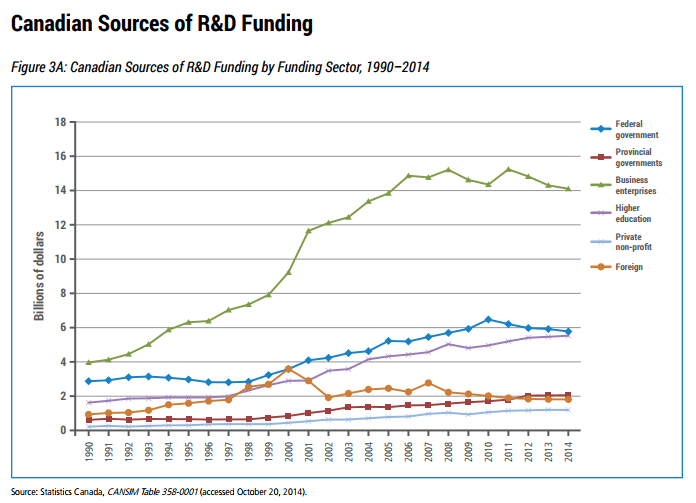Is this a corruption of academic freedoms or simply how research is done in the 21st century?
Many of the things you have done today have been made possible through innovation. Innovations have become crucial to our daily lives and will continue to improve our lives into the future. Innovations such as labour saving devices like computers and appliances, medical technologies and drugs, and increases in food production capability, not to mention the safety of our food, have improved the quality of life enjoyed by individuals.
The average Canadian utilizes many innovations, yet the Canadian business sector has been criticized for not investing enough in innovation. According to Canada’s Science, Technology and Innovation Council, these sectors have “performed poorly in absorbing science, technology and innovation talent into the labour force.” Out of 43 countries, Canada’s economy ranked 22nd in science and technology-related occupations. Simply put, Canada is a middle of the pack when it comes to investing in science and innovation. This suggests fewer Canadian jobs and innovative products are delivered by these sectors compared to competing nations. The implication of this is whether Canada should invest heavily in an effort to keep up or accept that the innovation will occur in another nation and Canada will import these products.
In 2014, nearly $30 billion was spent on research and development (R&D) in Canada. Of which $14 billion was invested in by private industries, the federal government contributed $5.8 billion and universities at $5.5 billion. It is important to note that not all of the industry R&D funding was spent internally, much of this funding was invested into university partnerships. During 2014 Canadian university R&D funding amounted to $12.4 billion, of which almost $7 billion came from industry. More than half of the amount of Canadian university R&D investment was due to industry contributions.
With nearly $7 billion in industry partnership funding, many of the colleges throughout Canadian universities are partnering with industry. Unfortunately, this standard university practice is under attack. In May of this year, the CBC ran a story that was heavily critical of one professor at the University of Saskatchewan regarding his research collaborations with the agriculture industry. When the CBC first posted this story, it was titled, ‘Prof under fire for ties to Monsanto’, deliberately trying to incite a backlash against the professor and the U of S. In spite of the additional number of graduate students and post-doctoral researcher positions made available through this collaborative research, numerous U of S faculty were surprised by the news, with many highly critical of research collaborations between industry and universities.
Certainly, there are departments where industry research collaborations would be extremely unlikely, but most colleges and departments are involved in collaborative research. These research collaborations span colleges such as agriculture, business/commerce, education, engineering, kinesiology, law, medicine, pharmacy, science and veterinary medicine. Thousands of graduate students are annually funded through these collaborative research opportunities.
The move from solely public sector university funded research to public-private partnerships has been driven by federal granting councils such as NSERC (Natural Science and Engineering Research Council), CIHR (Canadian Institutes for Health Research) and Genome Canada. The reason for this transition is so that public funds could leverage private sector matching funds, allowing more research to be conducted. In Canada, it has more than doubled investments in R&D innovation as universities are undertaking $12.4 billion in R&D, while only $5.5 billion of this is from university funding.
As the federal government has identified, Canada needs to be more innovative and a major cornerstone of this is to have even more private sector partnership funding with universities. This is vital for new processes, products and technologies that contribute to climate change, food security and sustainability. Without public-private research collaborations at Canadian universities, innovation would suffer dramatically. Investments, research scientists and top graduate student candidates would all flow to other countries. Innovation R&D in the 21st century is anchored in beneficial public-private research collaborations.



Can you provide your reference list for this article?
The two links in the blog provide the bulk of the references. Information about NSERC, CIHR and Genome Canada come from their websites.